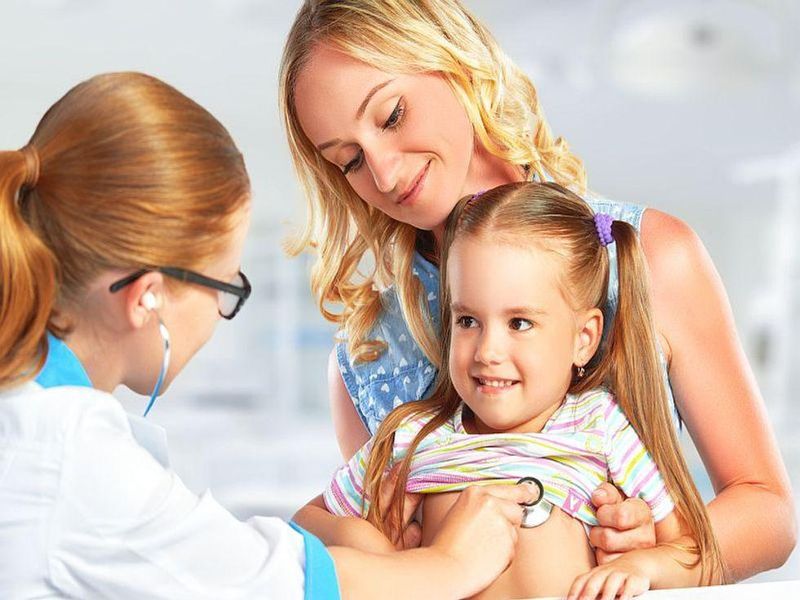The American Academy of Pediatrics National Conference & Exhibition
The annual meeting of the American Academy of Pediatrics was held virtually this year from Oct. 8 to 11 and attracted participants from around the world, including primary care pediatricians, pediatric medical subspecialists, pediatric surgical specialists, and other health care professionals. The conference featured scientific sessions that focused on the latest advances in the care of infants, children, adolescents, and young adults.
In a quality improvement study, Alexandra Byrne, M.D., of the University of Florida in Gainesville, and colleagues found that providing department-wide training on firearm safety and evidence-based recommendations, free firearm locks, and Be SMART© educational materials significantly improves firearm screening and anticipatory guidance during well-child checks.
The authors provided pediatric department-wide training on firearm safety and evidence-based recommendations for screening and anticipatory guidance. Free firearm locks and Be SMART© posters and caregiver education cards were provided to all University of Florida Pediatric Primary Care Clinics. Self-reported data were collected via anonymous electronic surveys at baseline and three to four months after each intervention. The researchers found that pediatrician firearm safety screening increased (from 37.8 to 72.4 percent), along with the provision of free firearm safety locks (from 9.6 to 79.3 percent). In addition, both counseling that the safest home is one without firearms and counseling on safe firearm storage also increased.
“Our study increased firearm screening and provision of free firearm locks, which we hope will result in safer firearm storage and decreased firearm injuries amongst children,” Byrne said.
In a prospective observational study, Usha Sethuraman, M.D., of Central Michigan University in Mount Pleasant and the DMC Children’s Hospital of Michigan in Detroit, and colleagues found that the levels of two cytokines (MIG and CXCL-10) are higher in children and adolescents with severe COVID-19 infection than in those with more mild-to-moderate infection.
In an effort to develop a model that is capable of predicting severe COVID-19 in children, the authors evaluated salivary biomarkers (cytokines and microRNA) in participants with and without severe disease due to severe acute respiratory syndrome coronavirus 2. A preliminary analysis of 180 saliva samples for cytokines and 129 saliva samples for microRNA was conducted. Although three salivary cytokine levels were elevated significantly in children with severe COVID-19, a model that included cytokines only contributed to 4 percent variance between severe and nonsevere cases. However, 63 salivary microRNA levels were differentially expressed in children (more than twofold difference) with severe COVID-19, and 60 percent of them were down-regulated. A model of six microRNAs in preliminary results was able to differentiate severe and nonsevere cases with very high sensitivity (96 percent) and accuracy (85 percent).
“If saliva cytokines and/or microRNAs are found to be differentially expressed in children with severe COVID-19, this could be a simple test in the emergency department that can help providers determine disposition and early treatment,” Sethuraman said. “Further, being noninvasive, saliva biomarkers could be a game changer in the approach to diagnosis and prediction of severity in children who do not generally like to be poked for blood samples.”
In a retrospective medical record review of neonates born at less than 34 weeks of gestation (more than six weeks before their due date) and admitted to a neonatal intensive care unit, Natalie Davis, M.D., of the University of Maryland School of Medicine and the University of Maryland Children’s Hospital in Baltimore, and colleagues found that breast milk from tetrahydrocannabinol (THC)-positive mothers is not harmful to the short-term health of this early preterm population.
The authors aimed to evaluate differences in outcomes between neonates who did and did not have exposure to THC prenatally and postnatally (via breast milk). When the researchers compared the health outcomes of the early preterm neonates, they found no evidence that providing breast milk from THC-positive mothers was detrimental to the health of the infants through hospital discharge.
“That said, we still don’t have data on longer-term impacts, which would be really important to know when making decisions on this issue,” Davis said. “That is why we still recommend women who plan to become pregnant and breastfeed, or those who are pregnant or who are breastfeeding, avoid all marijuana use, including exposure to THC products.”
AAP: Magnets, Electronics Foreign Body Ingestion Up During COVID-19
TUESDAY, Oct. 12, 2021 (HealthDay News) — During the COVID-19 pandemic, the frequency of total foreign body ingestion did not increase significantly, but the proportion of magnets and electronics foreign body ingestion did increase significantly, according to a study presented at the annual meeting of the American Academy of Pediatrics, held virtually from Oct. 8 to 11.
Read Full Text
AAP: More Burn Injuries Reported for Children During Pandemic
FRIDAY, Oct. 8, 2021 (HealthDay News) — During the COVID-19 pandemic, there was an increase in burn injuries among children, especially school-aged children, according to a study presented at the annual meeting of the American Academy of Pediatrics, held virtually from Oct. 8 to 11.
Read Full Text
AAP: Nonaccidental Trauma Up for Over 5s During Stay-at-Home Order
FRIDAY, Oct. 8, 2021 (HealthDay News) — For school-aged children, there was an increase in nonaccidental trauma during the stay-at-home orders in 2020, according to a study presented at the annual meeting of the American Academy of Pediatrics, held virtually from Oct. 8 to 11.
Read Full Text
AAP: Social Distancing Measures in Ohio Cut RSV, Influenza Rates
FRIDAY, Oct. 8, 2021 (HealthDay News) — Social distancing measures in Ohio in 2020 reduced the rates of influenza and respiratory syncytial virus, according to a study presented at the annual meeting of the American Academy of Pediatrics, held virtually from Oct. 8 to 11.
Read Full Text
AAP: Baby Wearing-Related Injuries Most Common in Infants 5 Months or Younger
FRIDAY, Oct. 8, 2021 (HealthDay News) — Baby wearing-related injuries most often occur in children aged 5 months or younger, and 19.3 percent of these infants require hospitalization, according to a study presented at the annual meeting of the American Academy of Pediatrics, held virtually from Oct. 8 to 11.
Read Full Text
Copyright © 2021 HealthDay. All rights reserved.








